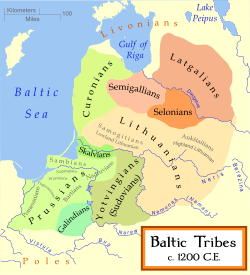You can help expand this article with text translated from the corresponding article in Russian. (February 2025)Click [show] for important translation instructions.
|
| Semigallian | |
|---|---|
| Zemgalian | |
| Native to | Latvia and Lithuania |
| Extinct | 16th century |
Indo-European
| |
| Language codes | |
| ISO 639-3 | xzm |
xzm | |
| Glottolog | zemg1234 Zemgalian |

Semigallian, also known as Zemgalian, was an East Baltic language of the Baltic language sub-family of the Indo-European languages.